IN THE FLESH: TALKING TO DOOM, RAGE AND SUFFERING CONCEPT ARTIST BEN OLSEN

A little while ago we took a deep dive into some golden oldie horror titles that had fallen by the wayside of gaming’s collective memory. At the top of the list was The Suffering; an awesome action-horror game with some unique and creepy monsters. We reached out to the brainchild of these creatures, professional game concept artist Ben Olsen, and found he quite the résumé when it came to the world of the macabre! Having worked on 2011’s Rage and early versions of what would become 2016’s Doom, we decided to sit down with him to see what made him tick.
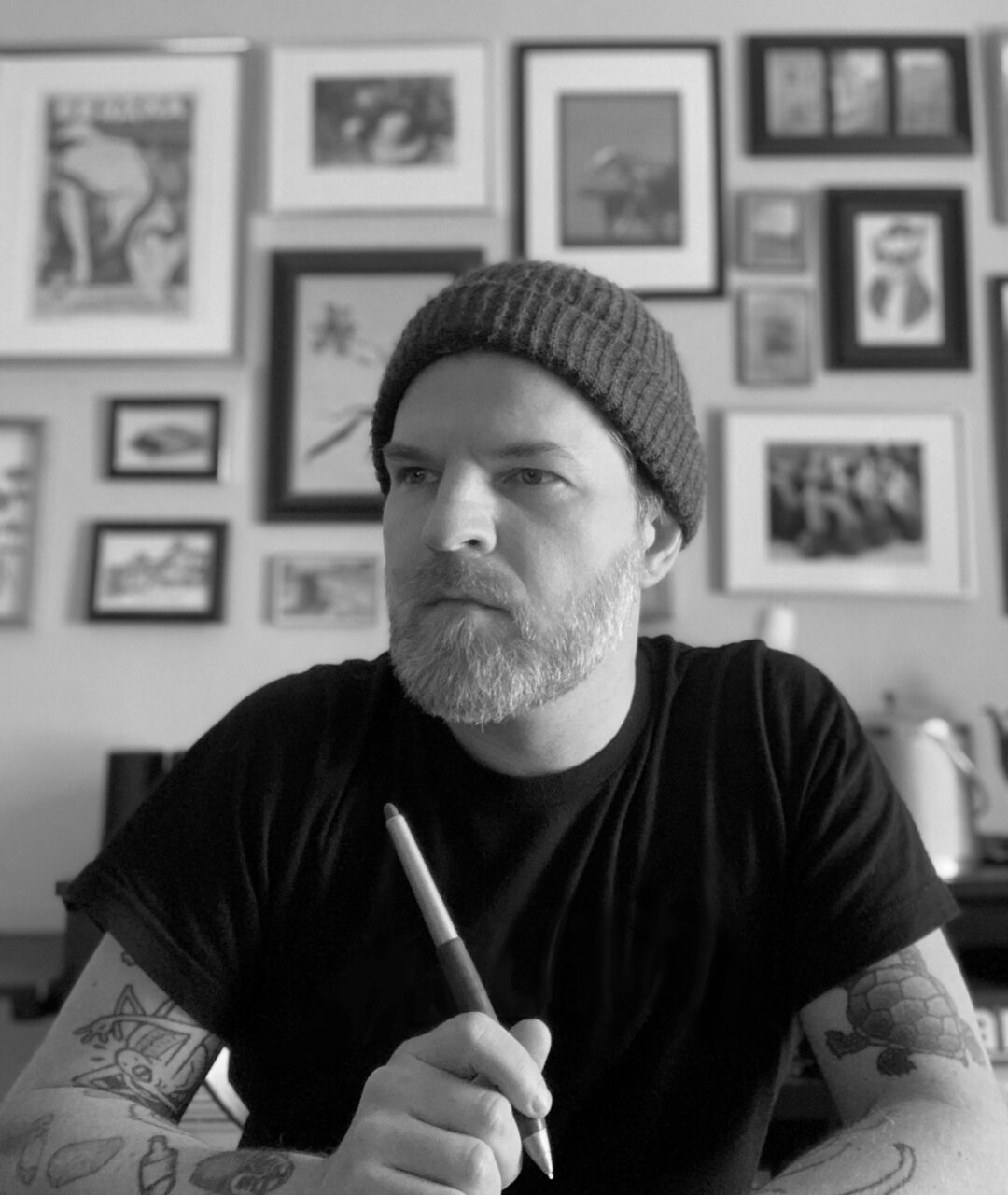
Dread XP: How did you first get started in the world of video game concept art?
Olsen: When I was young I wanted to be a comic book artist. I hadn’t considered a career in video games. The term “concept artist” was not as well-known back then.
There was a person at art school with the title of Career Placement Counselor. She had the idea that I should try for a job at a game studio. She actually set interviews up for me and even drove me to one or two of them!
The industry was still pretty new back then, and I didn’t know a lot about it. But after getting my first job with Monolith Productions, I was hooked.
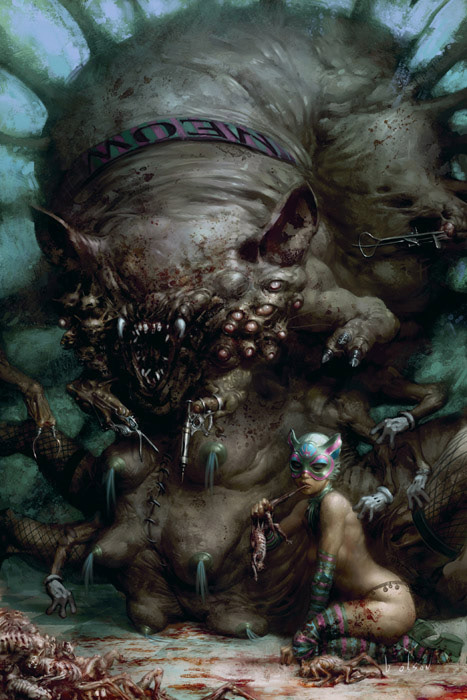
DXP: You had a lot of involvement with the unique monster designs for The Suffering games. Rather than traditional creatures like vampires and werewolves, the monsters in these games all look like mutilated humans in extreme discomfort. Can you talk about where this idea came from, and how you went about designing some of these enemies?
Olsen: I channeled several influences when I designed the creatures for The Suffering. I was always a fan of the Cenobites from Hellraiser — that could be where the mutilation theme came from. I was also inspired by the surrealist Hans Belmer and the movies Freaks and The Crippled Masters.

The conceptual throughline for the creature designs was that they were based on human bodies, but because of mutilations or unconventional limb formations they would have a distinctive and maybe disturbing style of movement. This also had the effect of helping the player make a visual distinction between creature classes based on movement style, even in dark and foggy environments.
DXP: You’ve worked on Id’s Rage game doing some concept art. How did that come about? What was the look you/ Id were trying to achieve with this game?
Olsen: A freelance recruiter set me up with an interview at Id. Before that time I would not have thought of myself as qualified to work with this legendary team.
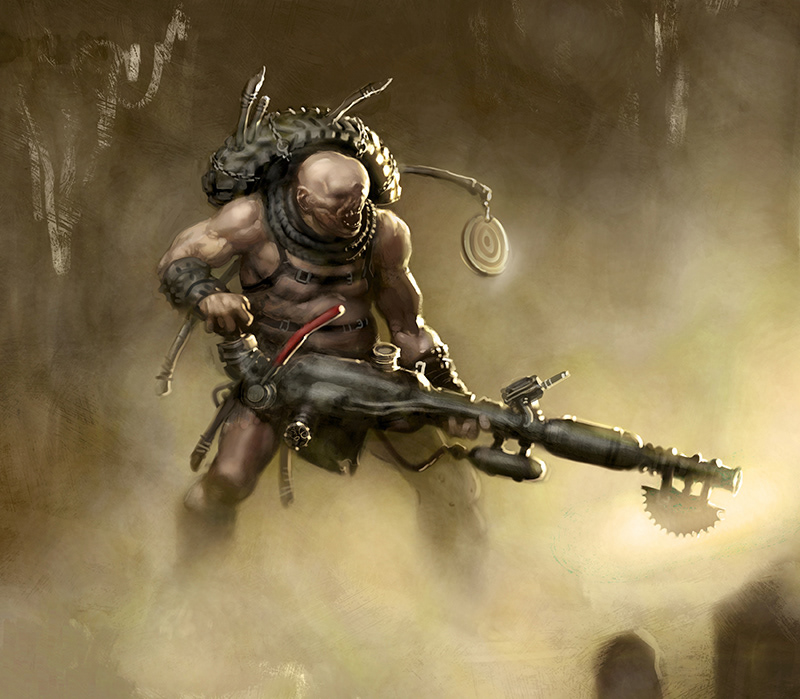
Kenneth Scott, Rage’s art director at that time, had done the initial work of establishing the style for the characters. Branching and expanding upon the foundation that Kenneth had laid down, I designed the majority of the characters for Rage. Some of the primary influences were the artists Katsuya Terada and Takayuki Takeya. I loved working on that game.

DXP: You also did concept art for Doom 4. Can you talk a bit about that project and your involvement with it?
Olsen: I worked on Doom 4 in its first year of production. I had a great time while on that project but I left Id because I relocated to another city.
Doom 4 had a long production cycle and went through a few changes in direction over that time. Unfortunately, I don’t think any of my designs made it into the final product, but I’m very proud of the work I did for the early iterations.
DXP: What are some of your biggest inspirations as an artist?
Olsen: I’m inspired not only by the what, but also the why and how. For me, learning is inspiring. For instance, gaining some understanding of an existing creature’s anatomy, evolution, or place in ecology can inform the design of a fictional creature. This is the same for vehicles, buildings, weapons, environments (biomes), etc. Seeing the world with more fidelity through learning how it all works is rewarding in itself.
DXP: A lot of your characters tend to have a very fleshy, stubby appearance – where did this come from?
Olsen: The fleshiness I like to paint probably came from a fixation I had with the art of Simon Bisley when I was a teenager. Also Frank Frazetta. The hyper-tactile way that both of these artists render wrinkles, creases, and dimples suggests a fixation on flesh and physique, germane to the brutality of the stories their illustrations convey. This is also relevant to the brutal stories we tell in many video games.
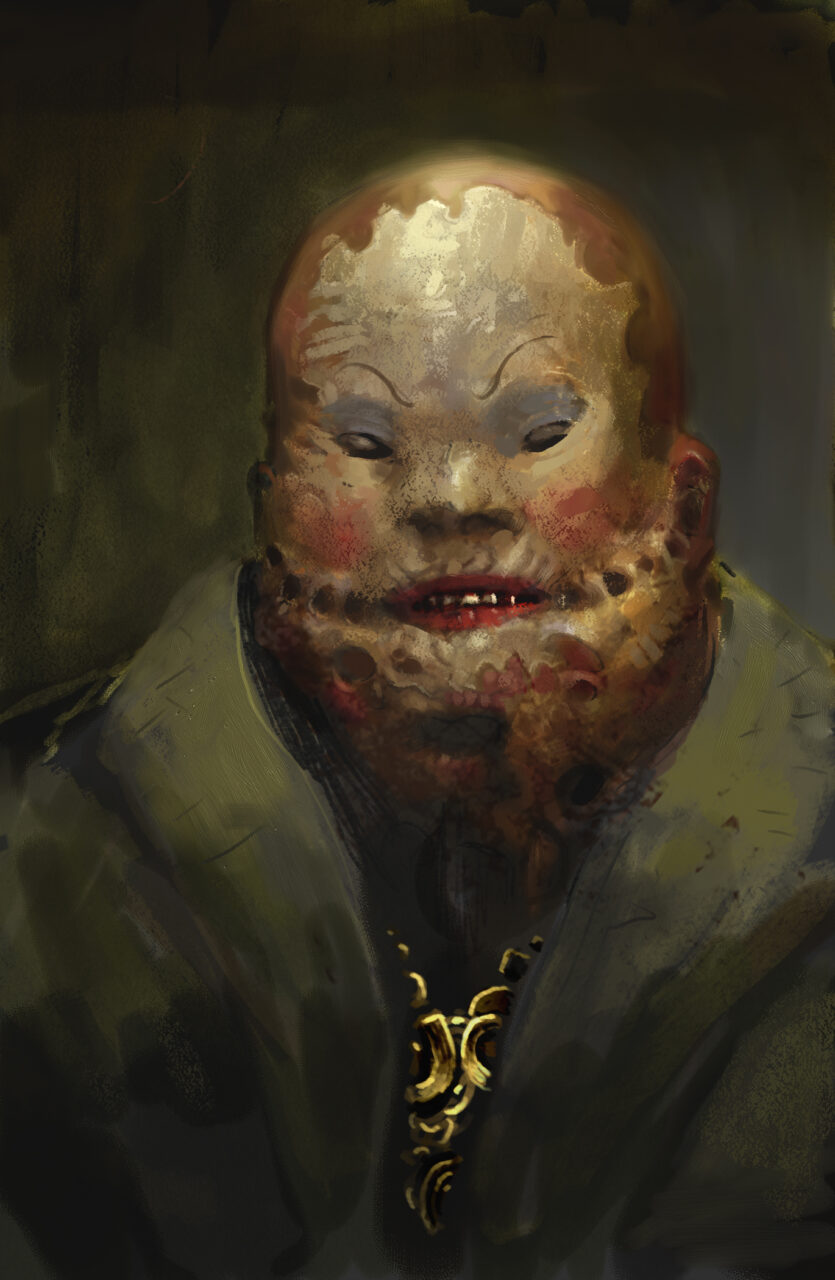
DXP: What is it about the horror genre that appeals to you?
Olsen: The horror genre appeals to me for some of the usual reasons. I felt like a misfit as a kid and found identification with the monsters instead of the heroes. I also had an overactive imagination that manifested itself as a pantheon of creatures who I was convinced were living under all the beds and in every closet. I think I drew pictures of monsters because they were on my mind a lot when I was a child.

DXP: If you could get to work on horror videogame IP, which would it be?
Olsen: I would love to work on Monolith Production’s Blood IP if they ever brought it back, but only if they use real character maquettes like in the original game. It may sound crazy, but maybe they could animate the maquettes by hand and 3d scan every frame? I would enjoy that. Also, Dark Souls would be fun to work on.
DXP: Of all the creatures and game characters you’ve created, of which are you the proudest?
Olsen: One character that I’m very proud of is the Authority Enforcer from Rage. Not just for my concept but for how it turned out in the game, including the animation, sound, and the great model that Id’s Character Modeller Vitaly Nymushin built.
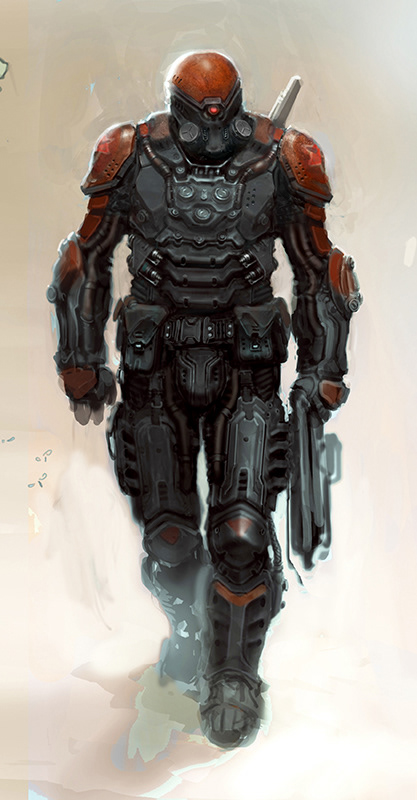
Categorized:Interviews

